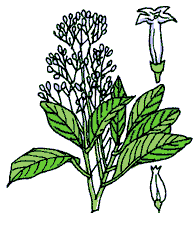
Dimdima
Online Children's Magazine from India

Dimdima
Online Children's Magazine from India

An Indian was lost in the jungles of the Andes. He was burning with fever from malaria. He stumbled upon a pool of water. Raging with fever, he threw himself down at the edge to satisfy his thirst. He did notice that the bark of the cinchona tree nearby had fallen into the water . It was believed that the tree was poisonous. But the poor man was so thirsty that he set aside these worries and drank the water.
Much to his surprise, he did not die but found his strength returning. He even managed to return to his village and he recovered fully.
A cure for malaria was thus born. The cinchona tree, also known as quina quina, gives the drug quinine, which has been used for the cure of malaria ever since.
The tree was renamed by the Swedish botanist Linnaeus in 1742 in honour of the the Countess of Chinchon, wife of the Viceroy of Peru who was reputed to be the first European to use an extract of bark to cure her of malaria.
EXPLORE MORE...
Get Help or Give Help.
- Do you have a Science Question?
- Post it here and get the answer.
- Some questions posted by others are not yet answered.
- View those questions and answer them.
Dimdima is the Sanskrit word for ‘drumbeat’. In olden days, victory in battle was heralded by the beat of drums or any important news to be conveyed to the people used to be accompanied with drumbeats.
Bharatiya Vidya Bhavan
K. M Munshi Marg,
Chowpatty, Mumbai - 400 007
email : editor@dimdima.com
Bharatiya Vidya Bhavan
505, Sane Guruji Marg,
Tardeo, Mumbai - 400 034
email : promo@dimdima.com
Dimdima.com, the Children's Website of Bharatiya Vidya Bhavan launched in 2000 and came out with a Printed version of Dimdima Magazine in 2004. At present the Printed Version have more than 35,000 subscribers from India and Abroad.